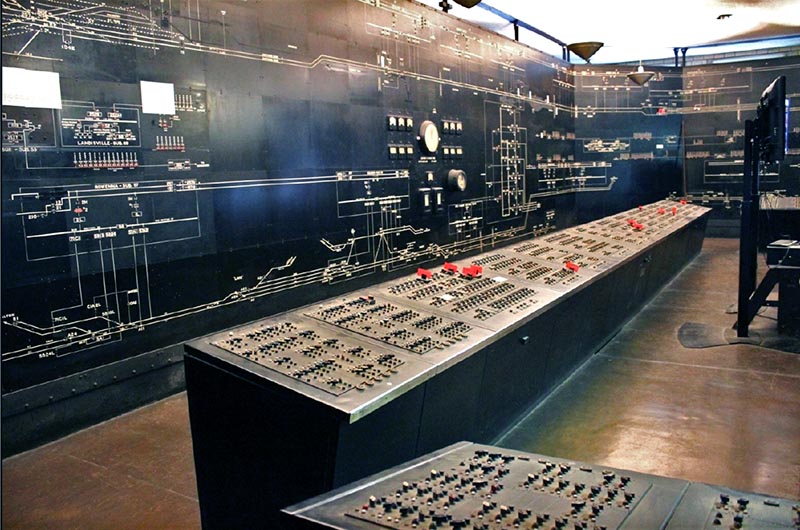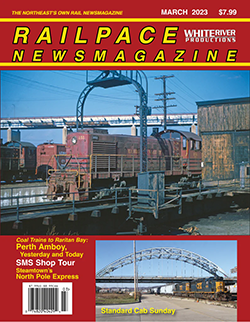The Pennsylvania Railroad began electrifying its lines in 1915 using overhead catenary. The distribution of electrical power was controlled by a series of Power Director Offices at strategic locations. One of these offices was located inside the train station at Harrisburg, Pa.
The first section of track to receive overhead electrification was a twenty-mile segment from Philadelphia Broad Street Station to Paoli. This work would subsequently continue westward toward Harrisburg, Pennsylvania, where the PRR’s electrification of its passenger lines would end. Enola, (across the Susquehanna River from Harrisburg) was the western terminus of PRR’s electrification of its freight lines. The Harrisburg Power Director controlled the power on all of this railroad west of Philadelphia, including the Pennsy’s famed “Low Grade Freight Line” that allowed freight traffic from the New York and Philadelphia areas to avoid climbing hills present along the route of the main passenger line and allowing freight trains to operate directly into the massive classification yard in Enola.
Historical Significance
The Pennsylvania Railroad was “The Standard Railroad of the World.” The electrification of the PRR was not just important to the railroad, it was important to the areas it served and important to the nation as a whole. This project not only allowed passengers and freight to move throughout the eastern United States more efficiently and more economically in peace time, it was also indispensible to the nation’s war effort during World War II. There were uncounted freight trains that moved raw materials to defense plants and moved weapons from defense plants to our ports.
There was also a constant flow of “Troop Trains” that carried military recruits to training bases and carried soldiers to and from embarkation points for Europe and the Pacific. While all U.S. railroads participated in this effort, the Pennsy’s electrification allowed the railroad to handle a great deal of this traffic while minimizing the use of fossil fuels, a precious wartime commodity. This was due to the fact that much of the electricity used by the PRR was generated by the Safe Harbor Hydroelectric Dam on the Susquehanna River. It was the Harrisburg Power Director’s Office that controlled much of that electrical power.
Engineering Significance
The electrification of the Pennsylvania Railroad’s multi-track main lines from New York to Philadelphia and Washington, and from Philadelphia to Harrisburg was a major engineering achievement of the early 20th century. It was the single largest capital improvement program undertaken by any railroad up to that time. The electrification program cost more than $250 million (roughly $3.2 billion in today’s dollars) and covered some 2,200 track miles, approximately 700 route miles. It accounted for approximately 25% of the electrified railroad trackage in the United States.
In 1936 the power system of the Pennsy consumed 563,000,000 kilo-watt-hours of electricity! Clearly, the system was engineered to last. The power system remains intact, serving trains operated by Amtrak, Maryland Area Regional Commuter (MARC), New Jersey Transit (NJT), and Southeastern Pennsylvania Transportation Authority (SEPTA) to this very day. It spans the time frame of those early MU trains in 1915 to the high-speed Acela trains of today.
In the process of modernizing the Northeast Corridor rail lines, Amtrak has closed the Power Director’s Office located in the Harrisburg Station and has moved those functions to its facilities in Delaware. It is the goal of the Harrisburg Chapter of the NRHS to preserve this historic facility before it is disassembled and relegated to the trash heap…



